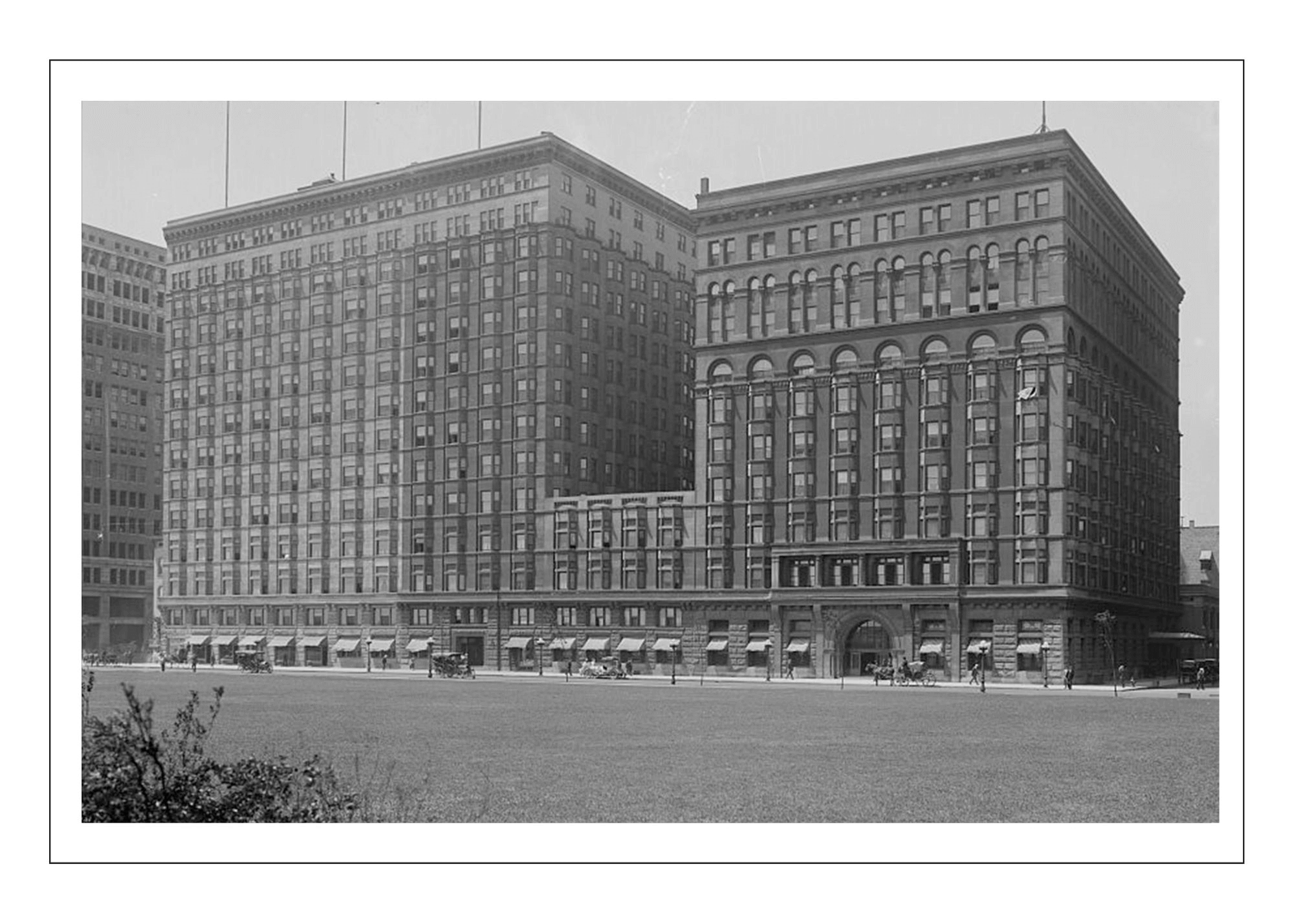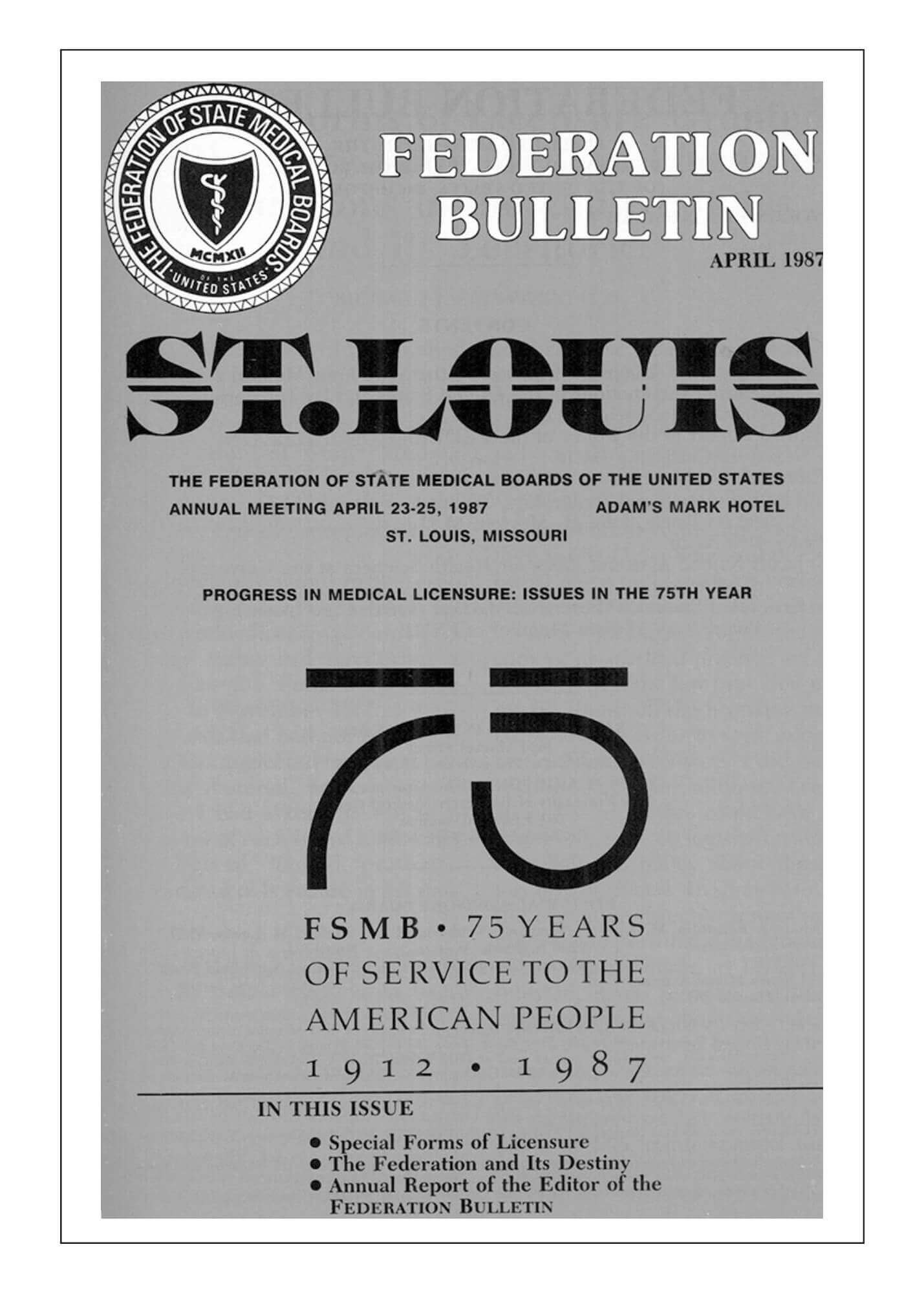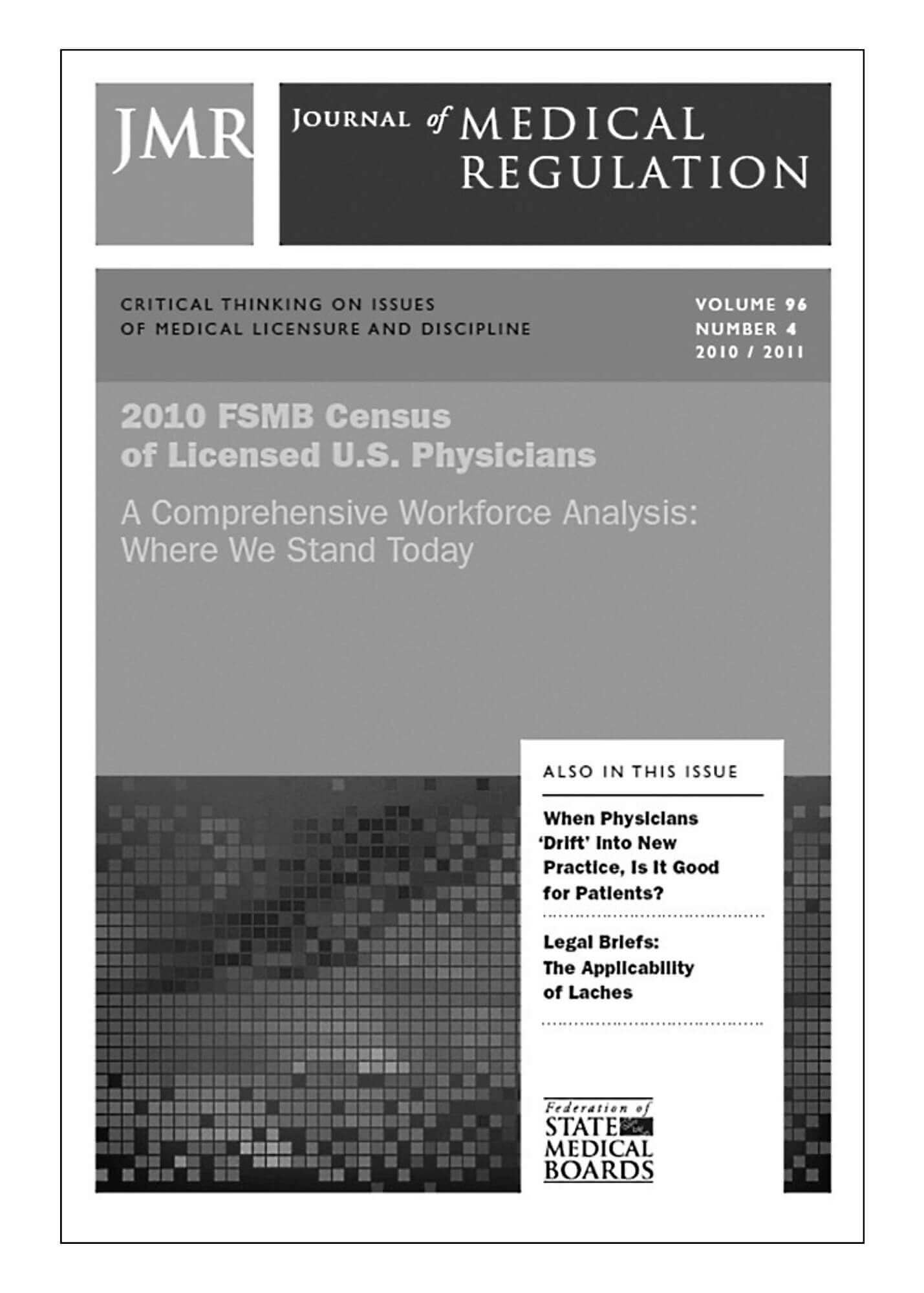History
The Federation of State Medical Boards (FSMB) is a national nonprofit organization representing all medical and osteopathic licensing boards across the United States and its territories. Since 1912, the FSMB has advocated for state boards and promoted high standards in physician licensure and regulation to safeguard public health, safety, and welfare.
State licensing laws enacted in the late 19th century established medical boards to license and discipline physicians within each state and territory. What began as a small annual meeting of board executives has evolved into a vibrant national body with more than 100 employees based in Texas and Washington, D.C. The FSMB champions the interests of state medical boards nationally, shaping policies and practices that impact the entire medical profession.
Read on to learn more about how the FSMB has grown and impacted the practice of medicine in the United States.
1912
The FSMB is established through a merger of the National Confederation of State Medical Examining and Licensing Boards and the American Confederation of Reciprocating Examining and Licensing Medical Boards.
(Pictured: Drs. George Matson and Beverly Drake Harrison, presidents of the National and American Confederations respectively.)
1913
The first edition of the FSMB’s Quarterly (now known as the Journal of Medical Regulation) is published.
The organization also hosts its first Annual Meeting in conjunction with the American Medical Association (AMA) meeting in Chicago, a practice that continues until 1982.
(Pictured: The Congress Hotel, site of FSMB annual meeting for over twenty years.)
1921
FSMB’s flagship publication, Journal of Medical Regulation has been in continuous print since 1913 through several name and publication schedule changes. In 1921, FSMB changed the title of its publication to Federation Bulletin.
(Pictured: 1987 Federation Bulletin)
1956
The FSMB’s first model policy, The Essentials of a Modern Medical Practice Act, is published and made available to state medical boards. The FSMB has since drafted model policies on a range of medical regulatory issues.
1962
The Board Action Data Bank, a repository for disciplinary actions taken by state medical boards, is launched. By 1981, all state medical boards report to the data bank.
(Pictured: FSMB Board Actions file room)
1966
The FSMB formally incorporates as a nonprofit 501(c)(6) organization.
1968
The Federation Licensing Examination (FLEX) is administered for the first time to assess international medical graduates for initial medical licensure. By 1979, all 50 states use FLEX. A revised FLEX is introduced in 1985.
(Pictured: 1976 FLEX Board)
1980
The FSMB Foundation is established to support and promote research and education initiatives that strengthen the safety and quality of health care through effective medical regulation.
1982
The FSMB holds its first annual meeting separate from AMA. The meeting was held in New Orleans, Louisiana.
(Pictured: FSMB 2017 Annual Meeting held in Fort Worth, TX)
1985
First administration of the “new” Federation Licensing Examination (New FLEX), which replaced the prior FLEX.
1988
The Special Purpose Examination (SPEX) is introduced jointly by the FSMB and National Board of Medical Examiners (NBME) for assessment of current or previously licensed physicians for purposes of endorsement of licensure, reinstatement of a license, or reactivation of a license after a period of inactivity. In 1995, the SPEX becomes the first medical licensing exam to move away from paper-based administration to computer-based delivery.
1991
 The United States Medical Licensing Examination (USMLE®) is created by the FSMB and NBME, replacing the FLEX and NBME Parts exams for initial medical licensure. The USMLE provides an assessment for initial medical licensure and is open to students and graduates of accredited medical education programs and to international students/graduates eligible for ECFMG certification.
The United States Medical Licensing Examination (USMLE®) is created by the FSMB and NBME, replacing the FLEX and NBME Parts exams for initial medical licensure. The USMLE provides an assessment for initial medical licensure and is open to students and graduates of accredited medical education programs and to international students/graduates eligible for ECFMG certification.
(Pictured: FSMB and NBME Board of Directors)
1994
 The FSMB, in partnership with the U.S. Department of Health and Human Services, hosts the 1st International Conference on Medical Regulation in Washington, D.C. Regulatory authorities from Australia, Canada, Ireland, New Zealand, South Africa, Sweden, the United Kingdom and the United States later come together to form the International Association of Medical Regulatory Authorities (IAMRA).
The FSMB, in partnership with the U.S. Department of Health and Human Services, hosts the 1st International Conference on Medical Regulation in Washington, D.C. Regulatory authorities from Australia, Canada, Ireland, New Zealand, South Africa, Sweden, the United Kingdom and the United States later come together to form the International Association of Medical Regulatory Authorities (IAMRA).
(Pictured: FSMB President & CEO Humayun J. Chaudhry, DO speaking at the 2017 IAMRA Symposium)
1995
The Federation Credentials Verification Service (FCVS) is established to create a permanent, lifetime portfolio of primary-source verified credentials that physicians can use for state licensure.
1999
The organization initiates its All-Licensed Physicians project to facilitate routine submission of updated licensure files from all state medical boards. This data facilitates other FSMB products and services, including data recovery after natural disasters, the FSMB’s Disciplinary Alert Service, and ongoing research projects.
2000
A Disciplinary Alert Service is created to enable state medical boards and others to have access to board actions within 24 hours of receipt by the FSMB.
2009
The FSMB introduces the Uniform Application (UA), designed to enhance the nation’s state-based licensure system by eliminating the need for physicians, physician assistants (PAs) and resident applicants to re-enter information when applying for licenses in multiple states.
2010
The FSMB opens an office in Washington, D.C., to take a more proactive role in advocating for state and federal legislation impacting medical regulation.
(Pictured: FSMB Chief Advocacy Officer Lisa Robin presenting to state medical board members)
2011
The FSMB publishes its inaugural Census of Actively Licensed Physicians in the U.S. The census is published biennially in the Journal of Medical Regulation. In another milestone event, the FSMB, National Association of Boards of Pharmacy (NABP) and National Council of State Boards of Nursing (NCSBN) formalize their advocacy partnership with the creation of the Tri-Reglator Collaborative. Together, their various state member boards regulate a combined five million physicians, pharmacists and nurses in the U.S.
(Pictured: JMR cover from issue in 2011 with first FSMB census)
2017
To help streamline the licensing process for physicians who want to practice in multiple states, the FSMB helps launch the Interstate Medical Licensure Compact.
2021
The Opioid Regulatory Collaborative (ORC), a new partnership of the FSMB, American Association of Dental Boards (AADB), National Association of Boards of Pharmacy (NABP) and the National Council of State Boards of Nursing (NCSBN), is launched to address the nation’s opioid epidemic.







